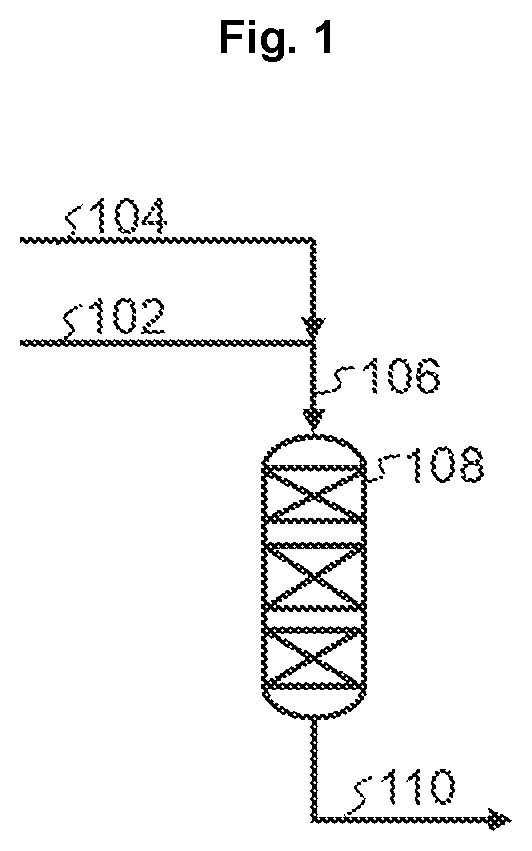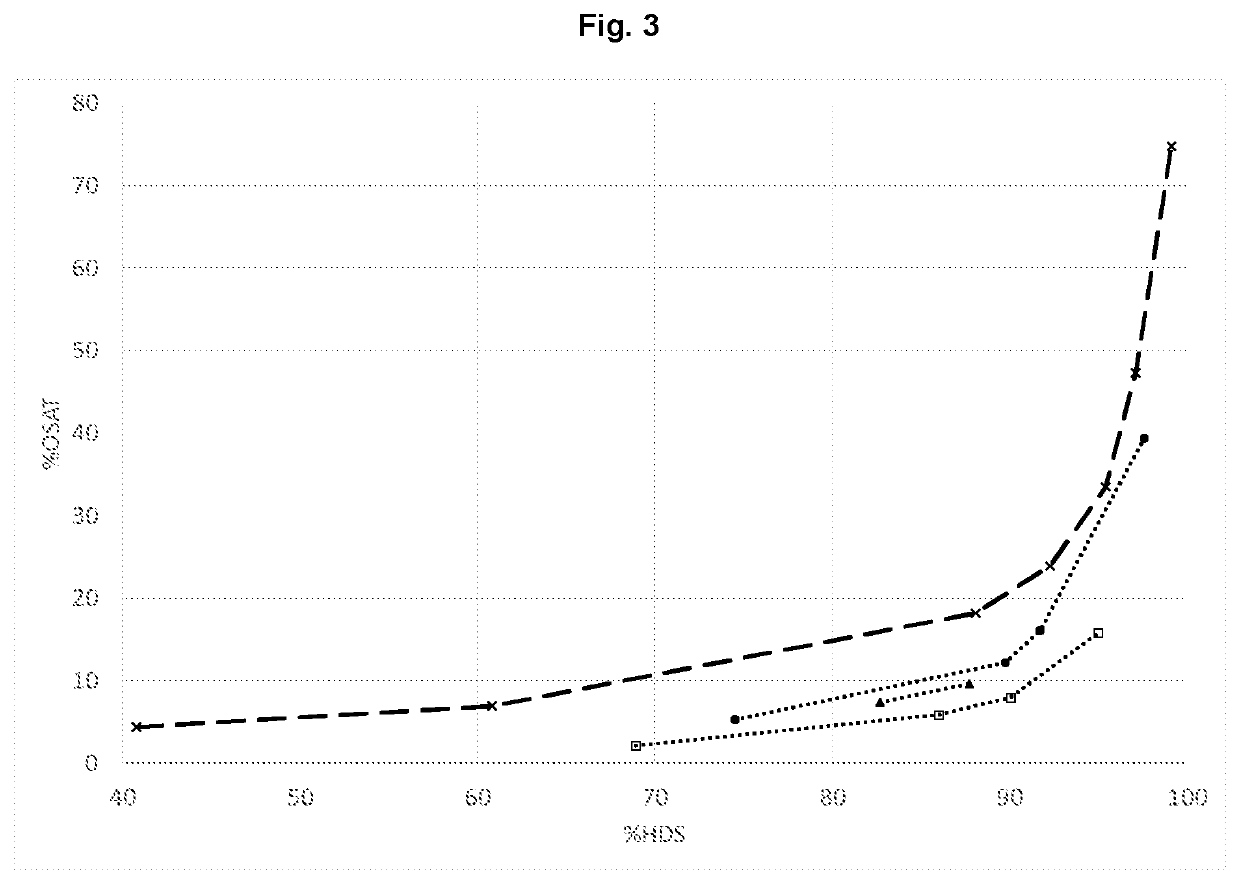Process for desulfurization of hydrocarbons
a hydrocarbon and desulfurization technology, applied in the field of desulfurization of hydrocarbons, can solve the problems of significant loss of olefins through hydrogenation, add significantly to production costs, etc., and achieve the effect of reducing the loss of octane numbers and high desulfurization
- Summary
- Abstract
- Description
- Claims
- Application Information
AI Technical Summary
Benefits of technology
Problems solved by technology
Method used
Image
Examples
example 1
[0102]In Example 1 Feedstock 1 was treated under a GOR level of 500 Nm3 / m3, with 100% hydrogen treat gas. The severity of hydrodesulfurization was controlled by varying the temperature from 200 to 280° C. and the gas to feedstock ratio (GOR) of 250 to 1400 Nm3 / m3, with an inlet pressure of 20 barg. The liquid hourly space velocity (LHSV) was 2.5 1 / hr (v / v / hr). Experimental results are shown in Table 3, and in FIGS. 3 and 4 using the symbol ‘x’.
example 2
[0103]In Example 2 Feedstock 2 was treated under a GOR level of 1200 Nm3 / m3 with 100% hydrogen treat gas with an inlet pressure of 20 barg. The severity of hydrodesulfurization was controlled by varying the temperature from 220 to 265° C. The liquid hourly space velocity (LHSV) was 2.5 1 / hr (v / v / hr). Experimental results are shown in Table 4, and in FIGS. 3 and 4 using the closed circle symbol ‘●’.
example 3
[0104]In Example 3 Feedstock 2 was treated under a GOR level of 1200 Nm3 / m3 with a treat gas mixture of H2 and CH4 with a total inlet pressure of 20 barg. The severity of hydrodesulfurization was controlled by varying the H2 concentration in the treat gas from 42% to 75%. The temperature was 235° C. The liquid hourly space velocity (LHSV) was 2.5 1 / hr (v / v / hr). Experimental results are shown in Table 5, and in FIGS. 3 and 4 using the closed triangle symbol ‘▴’.
PUM
| Property | Measurement | Unit |
|---|---|---|
| Temperature | aaaaa | aaaaa |
| Temperature | aaaaa | aaaaa |
| Temperature | aaaaa | aaaaa |
Abstract
Description
Claims
Application Information
 Login to View More
Login to View More - R&D
- Intellectual Property
- Life Sciences
- Materials
- Tech Scout
- Unparalleled Data Quality
- Higher Quality Content
- 60% Fewer Hallucinations
Browse by: Latest US Patents, China's latest patents, Technical Efficacy Thesaurus, Application Domain, Technology Topic, Popular Technical Reports.
© 2025 PatSnap. All rights reserved.Legal|Privacy policy|Modern Slavery Act Transparency Statement|Sitemap|About US| Contact US: help@patsnap.com



